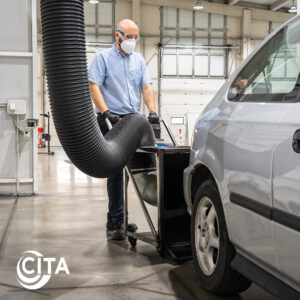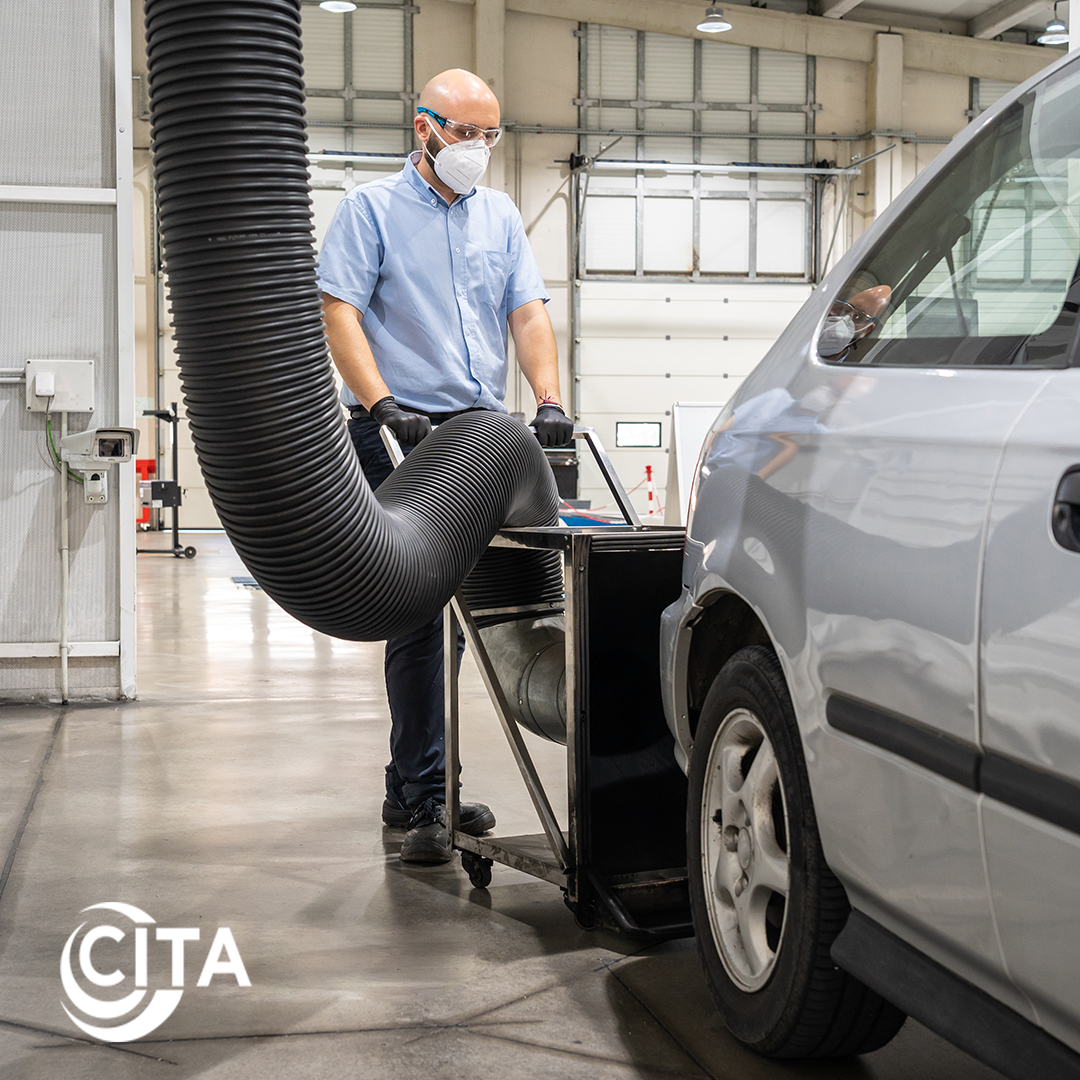Monitoring of NOx emissions as part of the PTI
 After particulate matter, nitrogen oxides (NOx) are the second largest cause of premature death out of the various pollutants. Within the EU (EU 27), NOx emissions caused 40,400 premature deaths in 2019 and 47,700 in all 41 European countries. Road transport was responsible for 39% of these NOx emissions, making it the largest contributor of this pollutant from all sources. This results in a calculated 18,600 premature deaths per year caused by NOx emissions from road transport in Europe[1] [2].
After particulate matter, nitrogen oxides (NOx) are the second largest cause of premature death out of the various pollutants. Within the EU (EU 27), NOx emissions caused 40,400 premature deaths in 2019 and 47,700 in all 41 European countries. Road transport was responsible for 39% of these NOx emissions, making it the largest contributor of this pollutant from all sources. This results in a calculated 18,600 premature deaths per year caused by NOx emissions from road transport in Europe[1] [2].
In 2021, the World Health Organization (WHO) published new air quality guidelines to protect human health. Here again, NOx is identified as one of 4 key air pollutants that are particularly relevant to human health.
Although air quality has improved in most European cities, urban areas – where two-thirds of Europe’s population lives – are particularly affected. Vehicles should not exceed their emissions level throughout their lifetime. The emission level is specified by the respective requirements from the type approval.
The additional RDE tests (Real Driving Emissions) have significantly tightened the requirements of the type approval. For vehicles in real operation and in the hands of vehicle drivers, the regular Periodic Technical Inspection (PTI) of each individual vehicle is an essential element in addition to other measures such as CoP and ISC to achieve the goal of constant emission levels of the vehicles without deterioration.
The monitoring and control of NOx emissions from traffic is currently not part of the Periodic Technical Inspection (PTI). However, the above figures clearly show that this is imperative and can be of great benefit to the environment and health. In the EU, the minimum requirements of the PTI – and thus also of the regular emission test – are regulated in Directive 2014/45/EU.
Each year, more than 100 million vehicles are subject to PTI. This offers a unique opportunity to verify the correct functioning of the vehicles engines as well as emission controlling and reduction systems such as the catalysators. Due to the gradual tightening of the requirements and limit values, modern vehicles emit significantly fewer pollutants than vehicles of earlier Euro levels.
However, when malfunctions occur or when the vehicles are subject to tampering, they will emit as much, or even more than older vehicles. This is confirmed by the EU Commission[3], according to which a large proportion of the total emissions fall to a minority of vehicles with defective emission control systems. 5% of the vehicle fleet is responsible for 25% of all pollutant emissions and 20% of the vehicles are responsible for 60% of pollutants.
It is therefore particularly relevant and important for the environment to detect these high emitters as part of the PTI.
This new CITA report identifies and evaluates fundamentally feasible methods and procedures for the monitoring of NOx emissions under the special and given framework conditions of the PTI. A recommendation is made on how the emission behavior can be efficiently evaluated for both current vehicles and future vehicle technologies.
Since the PTI is independent and represents a 100% test of each individual vehicle registered on public roads, it is very suitable for detecting high emitters. This is a very important measure to control the respective emission level of vehicles during their entire life cycle and is therefore an important instrument for a sustainable environmental policy.
This report represents the current status of investigations. Some other studies on NOx PTI are ongoing. Seven (7) potential methods have been identified, presented, and evaluated that could be considered for checking NOx emissions and NOx after-treatment systems as part of a periodic technical exhaust inspection (PTI). These methods and procedures were developed or co-developed and studied by different CITA members.
The potential methods described by CITA were discussed and evaluated trying to take into account that the inspections must be carried out in many different locations, in varying conditions, on a large number of vehicles with a wide range of technical conditions, and with limited time available.
The assessment and evaluation of the possibilities resulted in a relatively clear outcome, namely a feasible concept that covers current vehicles – starting with the Euro 5 standard. Such a concept has the greatest positive impact on the environment – especially in inner cities, which are particularly stressed – in view of the presumably evolution of the vehicle fleet towards electromobility.
For an efficient PTI, access to the necessary vehicle information such as NOx on-board sensors, exhaust gas temperatures, vehicle load, air mass, reagent injection and other information on the OBD interface of the vehicles must be available under all conditions. In addition, the PTI functions that will be formulated in the specifications for type approval in the future could be very efficient and helpful, such as the QNOx factor proposed in the document.
From CITA’s point of view, the combination of OBD/diagnostic functions/OBM data assessment, a validity check of the relevant software, a future introduction of QNOx (roughly analogous to OBFCM) and an exhaust measurement with certified and regularly calibrated instruments to validate the on-board sensors, is the most reliable and effective solution to detect the high emitters of the entire vehicle fleet on European roads.
CITA therefore strongly recommends that NOx emissions are monitored during regular PTI, and to limit and control NOx emissions from on-road diesel.
[1] https://www.eea.europa.eu/publications/air-quality-in-europe-2021/sources-and-emissions-of-air
[2] https://www.eea.europa.eu/publications/air-quality-in-europe-2021/health-impacts-of-air-pollution
[3] https://eur-lex.europa.eu/resource.html?uri=cellar:88ede036-761e-4b8e-b114-086bf76cea44.0001.02/DOC_1&format=PDF

